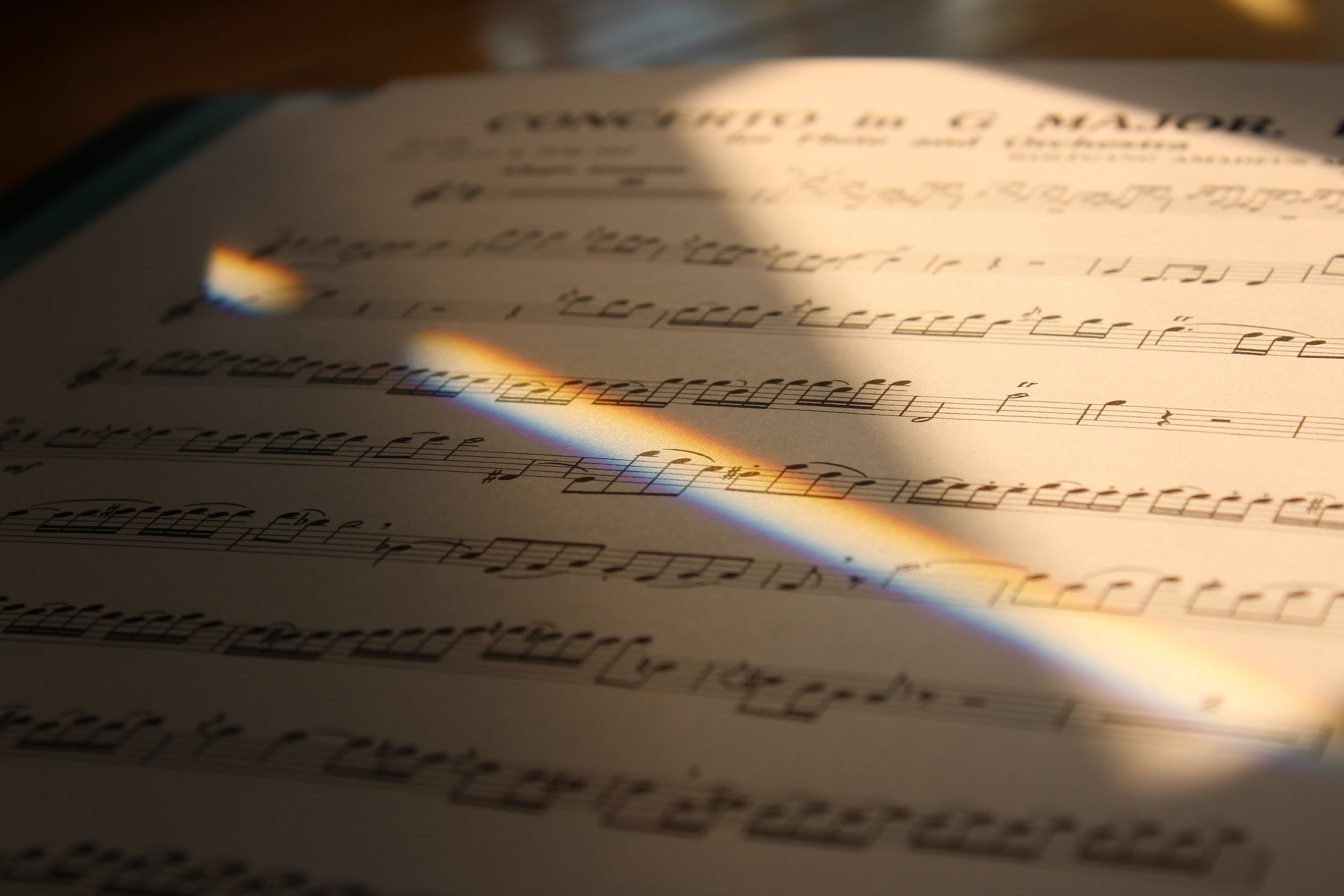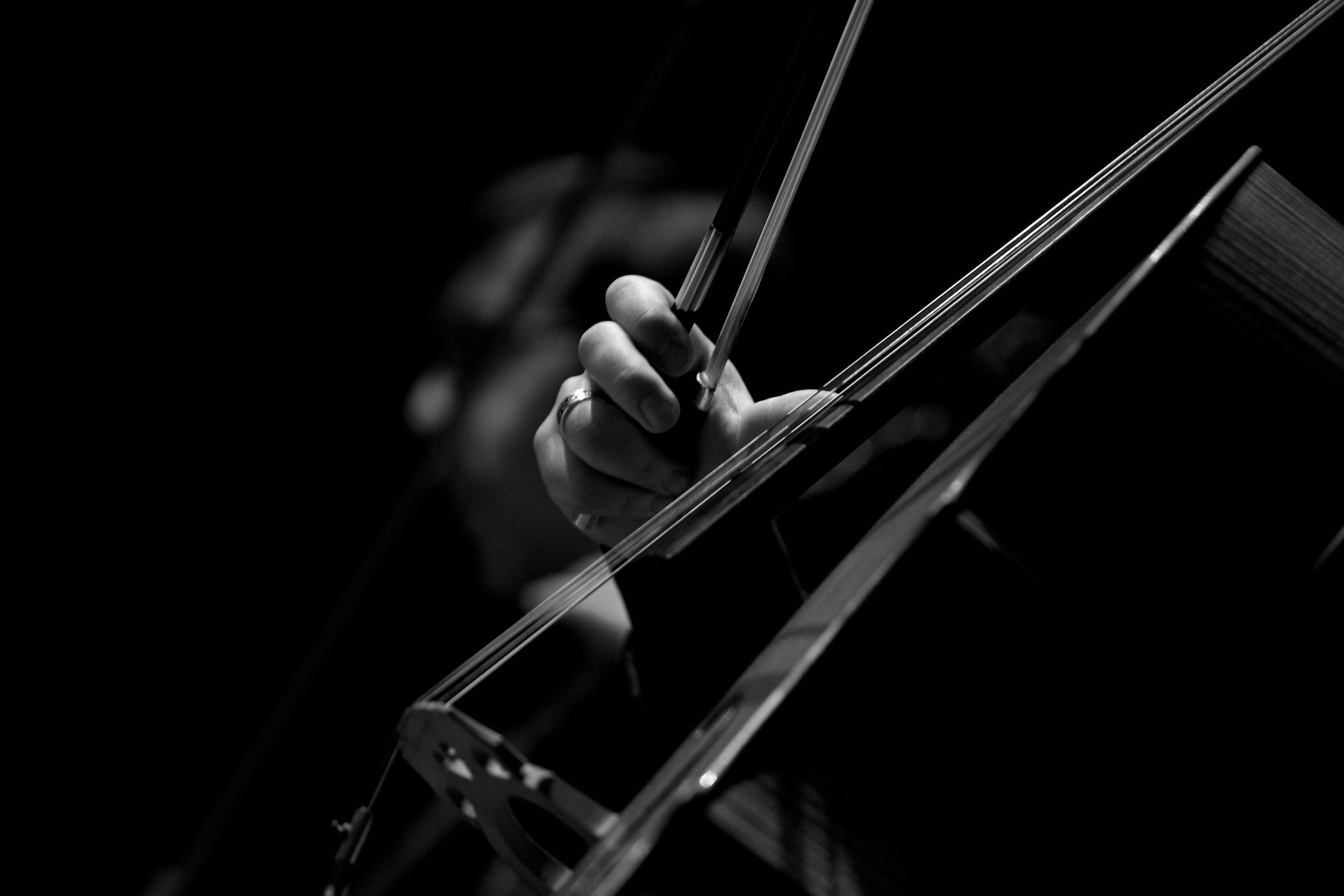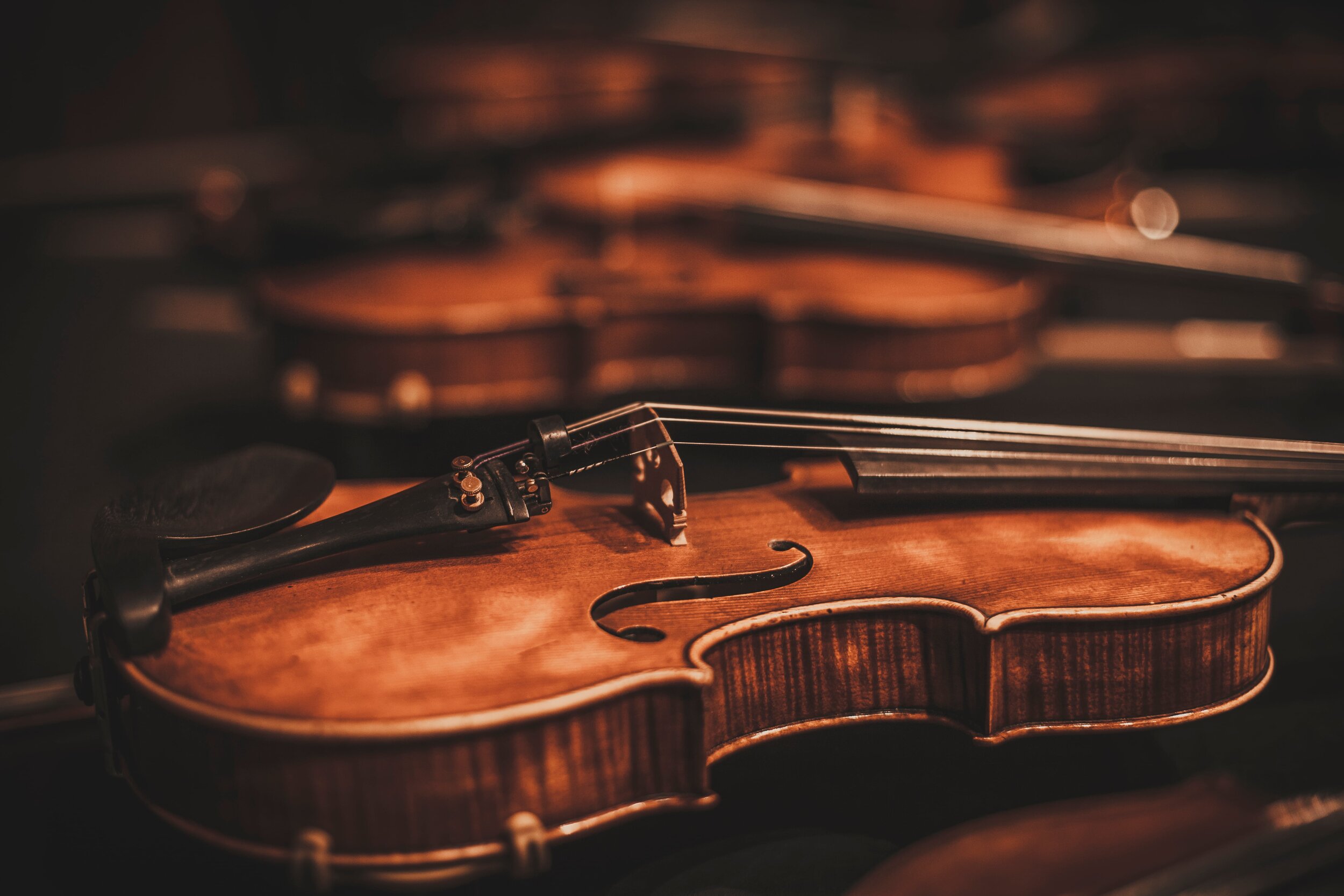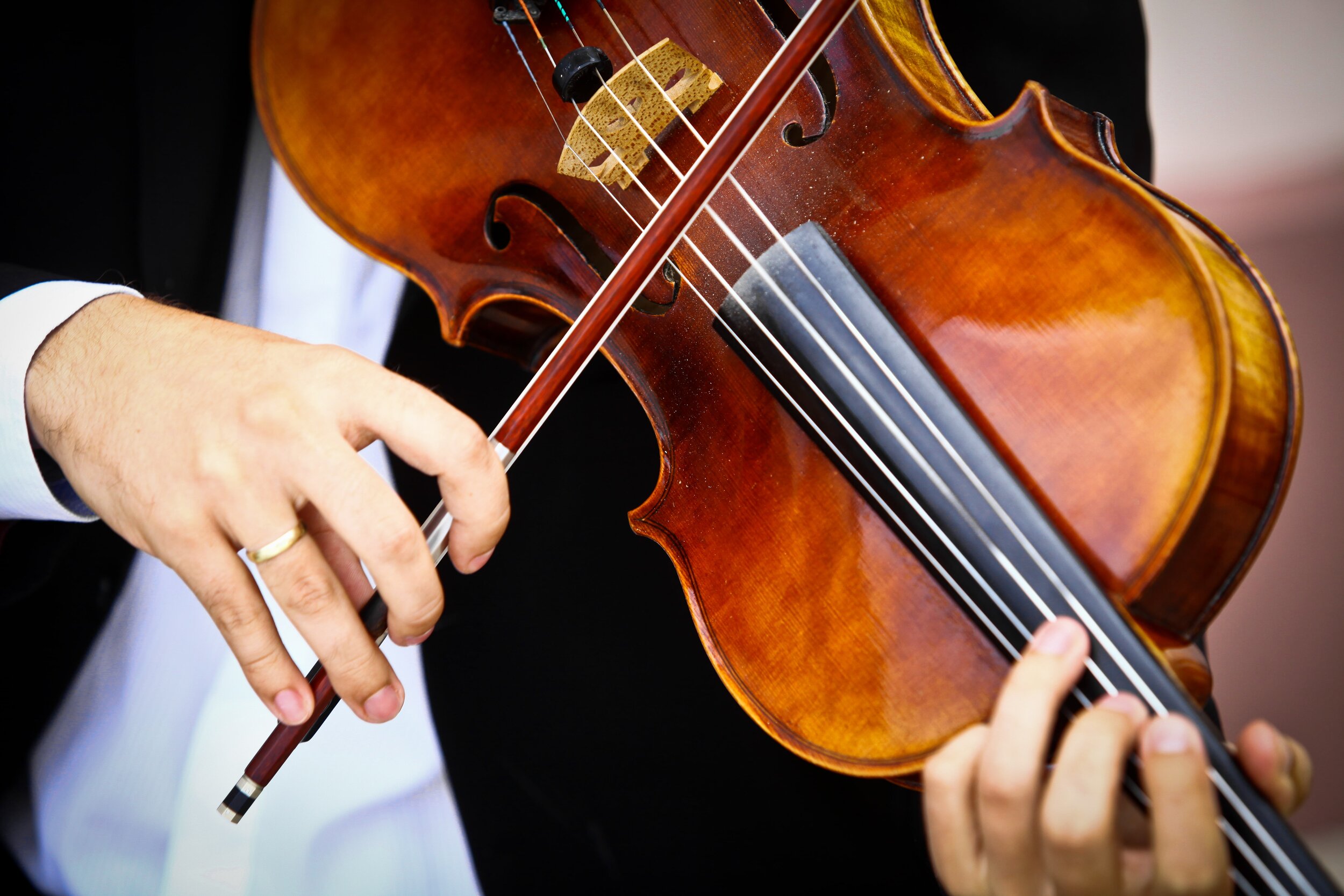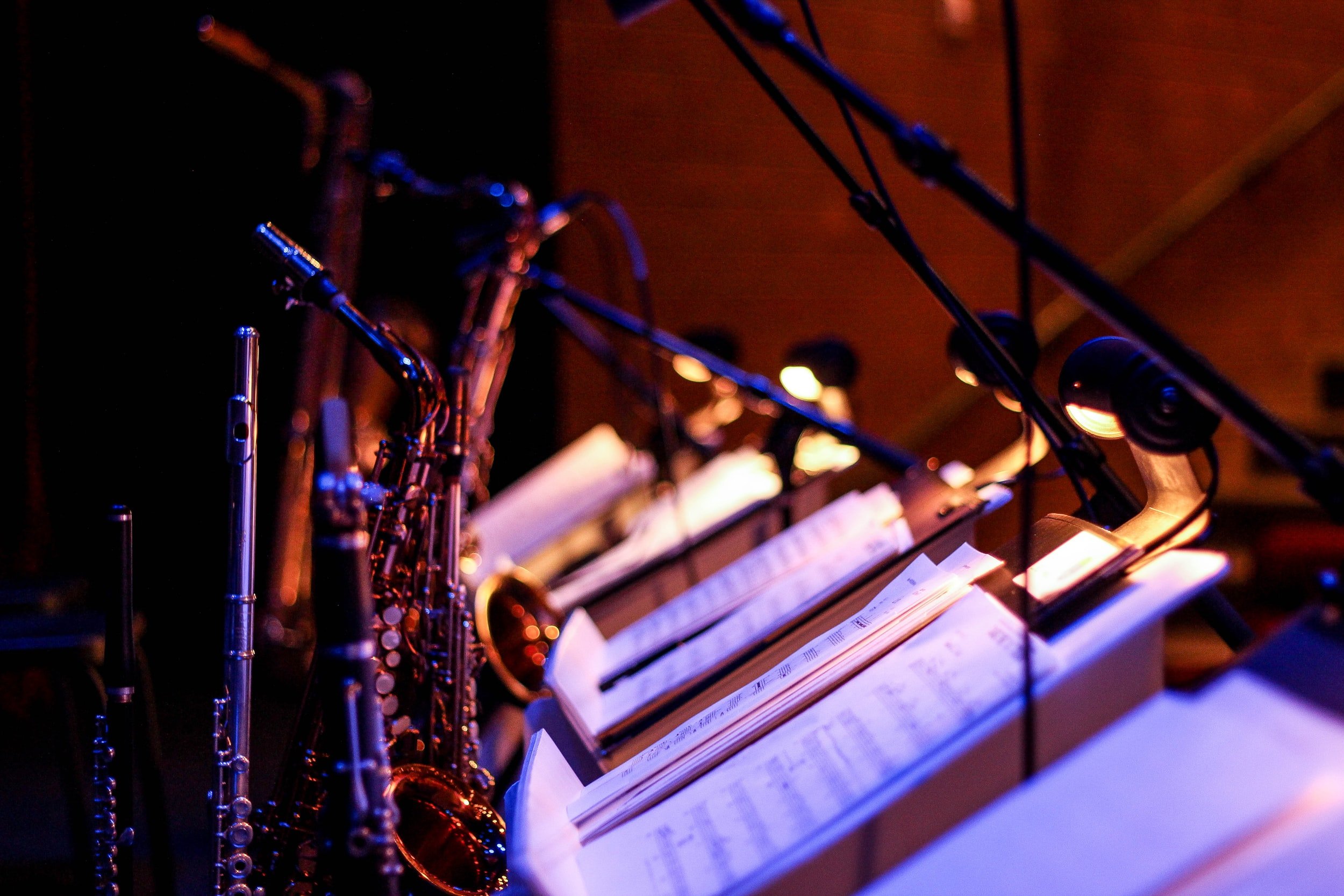Keyboard | Organ
Organ
Other Auxiliaries: Electronic Organ, Hammond Organ, Reed Organ, Positive Organ (historical)
The Pipe Organ. The pipe organ is actually a large number of instruments all played simultaneously by one performer at a master control panel, called the console. In some cases, the console can be moved about while tethered to the sounding pipes of the organ, which remain stationary. The console has between two and five manuals. Each manual has the same keyboard range of 5 octaves, C2 through C7. The console includes a pedal keyboard, ranging from C2 through G4. The console also includes draw tabs or draw knobs which are used for selecting timbres, called stops. A combination of stops is called a registration; a registration can be “saved”; buttons and toe studs which control pistons which can immediately invoke a “saved” registration setting, and at least two rocking pedals which allow some fluid dynamic control.
A five-octave group of pipes with the same acoustic construction is called a rank. The ranks are grouped into divisions, one for each keyboard manual and a pedal division. A typical medium-sized organ has three keyboard manuals. The middle manual is the Great; this division will generally have the most ranks and get the most use. Always positioned above the Great is the Swell, controlling a division which may have more colourful solo ranks; the swell division is placed in a “swell box”, a venetian blind device which can be opened and closed by the swell pedal. This is the only continuous dynamic control available on the organ; it must be remembered that the swell pedal only affects ranks in the Swell division, and that the difference between the sound of this division with box open or closed is no more than two dynamic levels. The manual below the Great is called the Positive or the Choir, providing ranks which supplementand contrast the other divisions. The Pedals have its own division with ranks appropriate to providing a functional bass.
The stop knobs or tabs attach the manual to the various ranks of its division, so that each key may play anywhere from one pipe to as many pipes as there are ranks in its division, depending on how many stops are “drawn.” Very awkward In addition, knobs or tabs may set couplings which add another octave or other harmonic doublings. These interval doublings are labeled by the length of a pipe {that might be sounded when C2 is played} what?. An open 8-foot pipe will play C2, so 8’ is used to indicate unison doublings, or “sounding as written.” An open 4’ pipe produces C3, so a 4’ stop sounds an octave above where it is played. 2’ sounds two octaves higher, 16’ an octave lower, 32’ two octaves lower. Certain stops called mutations will even produce non-octave harmonic partials and these ranks are tuned in just temperament: 22/3’ provides a pure 3rd partial, and 13/5’ provides a pure 5th partial, sounding two octaves and a p5 above the played note, and 16 cents flatter than even temperament — creating a wonderful juicy jangle in fat chords. These doublings may be used selectively: for example, using only an 8’ and 13/5’ creates an exotic gapped timbre. Turning the unison off is also an option; this allows, for example, the pedal to play an octave higher than its keyboard range seems to allow by calling for 4’ with the unison off. This paragraph lost me. I think I know what you’re talking about, but I got really confused. Maybe I’m just tired.
There are also stop knobs or tabs that allow coupling of the complete registration from one division to the manual for another.what? For example, “Swell to Great” means that whatever registration has been selected for the Swell division can be played on the Great manual in tandem with its own registration. “Swell to Pedal” can be invoked to bring the sound of a colourful Swell rank into the Pedal line.
On pipe organs, the crescendo pedal adds stops one-by-one as the rocking pedal is depressed forward. This creates a much larger dynamic range for the crescendo than the swell pedal provides, but the bumps can be heard as stops are added, and there is no control over the choice or ordering of accumulating timbres. A sforzando button or toe stud instantaneously adds an array of very loud stops and couplings, which can be instantaneously subtracted by pushing it again.
The pedal keyboard is generally played with alternating feet cooperating to create a single line, although having one foot sustain a “pedal-tone” while the other moves about is not uncommon. Moving double pedal lines I thought you meant two pedal tones that moved, didn’t understand, oh….take some care and ingenuity in their construction, and the result can be ineffectively muddy. Composers must realize that when the swell-pedal or crescendo pedal is active (operated by the right foot), the pedal line is limited to left foot solo. Though the pedals are ordinarily used to elicit bass lines, it is possible to assign them to higher stops, allowing them to play higher melodies.
Organ Notation. Normally three staves are used for organ notation, the top pair bracketed for the hands and the bottom for the pedals. Generally the staves represent the hands, rather than the manuals on which they play. Manual indications (“Swell,” “Great,” “Choir”) are written above the appropriate staff, and may change frequently. The initial registration should be written above the first staff of music, justified to the left? margin,.and changes to the registration are marked as the score progresses. If familiar with organ registration, provide as many precise registration suggestions as possible, although organists almost invariably adjust these to allow for the particular idiosyncrasies of the performance instrument. Composers less comfortable with the names and particular qualities of standard organ ranks and couplings may be prudent to simply provide dynamic and descriptive information in place of registration, but should apply these to specific manual designations, plotting out how changes in color and dynamics may be distributed.
Organ Strengths and Limitations. The organ’s invariable attack characteristics make it ill-suited for realizing music with Beethovenian dynamic and articulation detail. Compensating for this is the impressive impact of the many degrees of release-articulation audible on the organ, ranging from extremely short staccato, to subtle shadings of non-legato, to legato and overlapping legato; these can be mixed into a line to create an illusion of accent and attack variation. The organ’s prodigious dynamic range and ability to sustain tones indefinitely at a consistent dynamic level provide composers with a musical expansiveness unattainable on any other acoustic instrument. Composers are often seduced into writing too thickly for the organ, forgetting that silences and sparse textures are necessary to allow its exceptional varieties of color, texture, and release-articulation to be fully appreciated. good Even though many concert halls have a respectable pipe organ or a reasonably effective electronic imitation, the inclusion of the organ into orchestral scores continues to be rare. Perhaps this is because the organ is perceived as an orchestra unto itself, or because the uncompromising consistency of its sound fails to integrate with the dynamic quality of the orchestra. Doubling instrumental lines with organ tends to cancel out their individual color and articulative personality, but when it is used as an independent textural element, or when adding muscle to climactic tuttis, the organ is an exceptionally effective orchestral resource.






